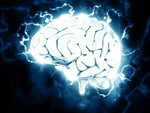 Voss et al. 2017, Front Psychol
Voss et al. 2017, Front Psychol
Neuroplasticity refers to the brain’s ability to modify its connections and function in response to experience. This experience-dependent plasticity is necessary for the acquisition of new abilities during early development or in adult life, and plays a crucial role in recovery after a neurological injury. During early developmental epochs known as critical periods (CPs), passive experience alone can have profound and long-lasting effects in cortical sensory representations. In contrast, plasticity in the adult brain occurs almost exclusively in the context of perceptual learning (PL); i.e., the process whereby attention and repetition lead to long-lasting improvements in stimulus detection or sensory discrimination.
Whether it occurs as a result of passive experience, PL, or other experimental interventions, cortical plasticity ultimately entails a change in activity patterns driven by a shift in the local levels of excitation and inhibition. And although cortical inhibitory interneurons constitute a clear minority compared to the number of excitatory neurons, they are instrumental in regulating both juvenile and adult experience-dependent plasticity.
My work in the NeuroSensory Biomarking Lab consistes of a series of experimental studies that addressed critical and interrelated knowledge gaps regarding the inhibitory regulating mechanisms of experience-dependent plasticity, both in the context of changes in the environment and during PL. Using the rat primary auditory cortex (A1) as a model, we combined electrophysiological, anatomical, chemogenetic, and behavioral methodologies to address each study’s main hypotheses.






